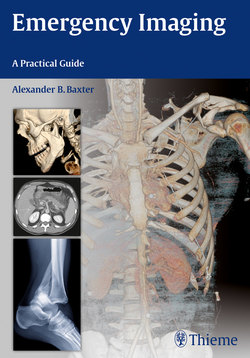Читать книгу Emergency Imaging - Alexander B. Baxter - Страница 91
На сайте Литреса книга снята с продажи.
Оглавление77
2Brain
usually due to metastatic disease from an extracerebral primary site.
CNS lymphoma is characteristically hy-perdense on CT because of the high lym-phoblastic nuclear to cytoplasmic ratio.Enhancement in nonimmunocompromisedpatients is usually homogeneous, sometimesdescribed as having a “lamb’s wool” appear-ance. MRI shows one or more well-demarcat-ed, homogeneously enhancing, round or ovalmasses that are usually slightly hypointenseto white matter on T1-weighted images andof variable intensity on T2-weighted scans.
Treatment consists of steroids and chemotherapy after surgical biopsy. One feature of CNS lymphoma is that it may regress so rapidly and dramatically to ste-roid treatment that the diagnostic biopsy may be negative after as little as 24 hours. Prognosis is dependent on the grade and is usually worse in immunocompromised pa-tients (Fig. 2.33).
◆Primary CNS Lymphoma
Primary CNS lymphoma is an uncommon tumor strongly associated with HIV/AIDS and other immunocompromised condi-tions, and most are non-Hodgkin and B-cell type, with peak incidence in the fifth decade. Signs and symptoms are usually nonspecific and include focal neurologic dysfunction, seizure, and headache.
In most patients CNS lymphoma devel-ops rapidly and involves the deep cerebral nuclei or periventricular white matter. The mass is usually bulky and well demar-cated with mild to moderate surrounding cerebral edema. In immunocompromised patients, primary CNS lymphoma may be multifocal, ring-enhancing, and di-cult to distinguish from toxoplasmosis. In general, toxoplasmosis will always show ring enhancement when > 1 cm, whereas larger lymphomatous masses often, but do not necessarily, enhance homogeneously. When meningeal spread is identified, it is
Fig. 2.33a–fa–d Primary CNS lymphoma. ~ 4-cm diameter hyperdense mass centered in the right putamen with compression of the right lateral ventricle and adjacent vasogenic edema. MRI shows relatively low signal intensity on T1-weighted images, mildly increased signal intensity on T2-weighted images, and avid con-trast enhancement.
e,f Multifocal CNS lymphoma. Subtle right frontal and thalamic low-attenuation changes on nonen-hanced CT. T2-weighted MRI is much more sensitive and shows high signal changes in both thalami and the right inferior parietal lobe.
